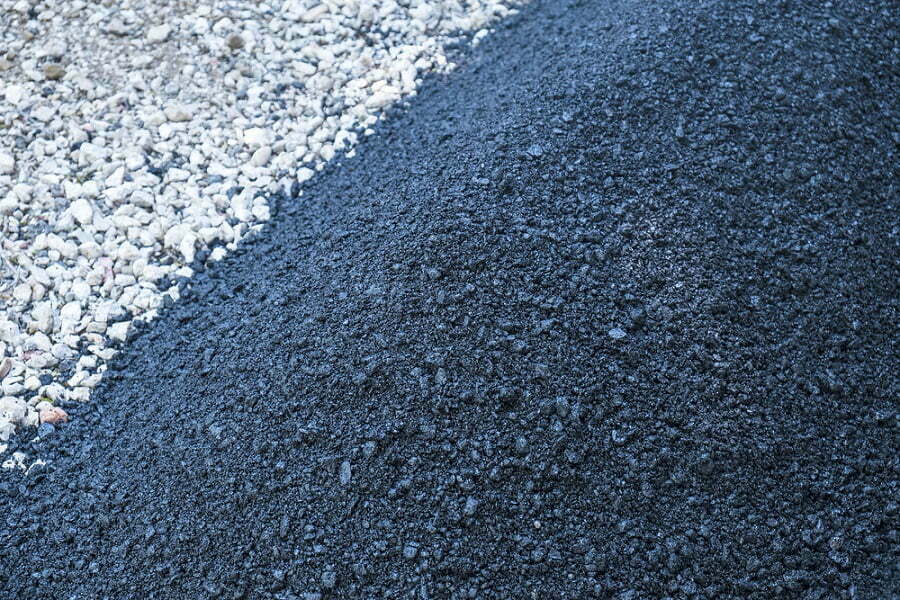Last updated on
Unlock the potential of shipping containers because innovation and sustainability are transforming them into cost-efficient, eco-friendly barns.
I have created these unique designs for your inspiration. I hope you will enjoy them!
Exploring the realm of sustainable architecture and creative reusability, shipping container barns present a compelling and innovative direction. While online resources abound with a plethora of existing ideas, the focus of this article delves beyond the mainstream to discover fresh, unique perspectives on this subject matter.
As a bonus, you’ll find a curated list of top resources for leading ideas at the end, to further stimulate your creativity and planning. So sit tight, as we embark on an imaginative journey, hoping to inspire and enrich your understanding of shipping container barn ideas from unique yet practical angles.
Greenhouse With Shipping Containers
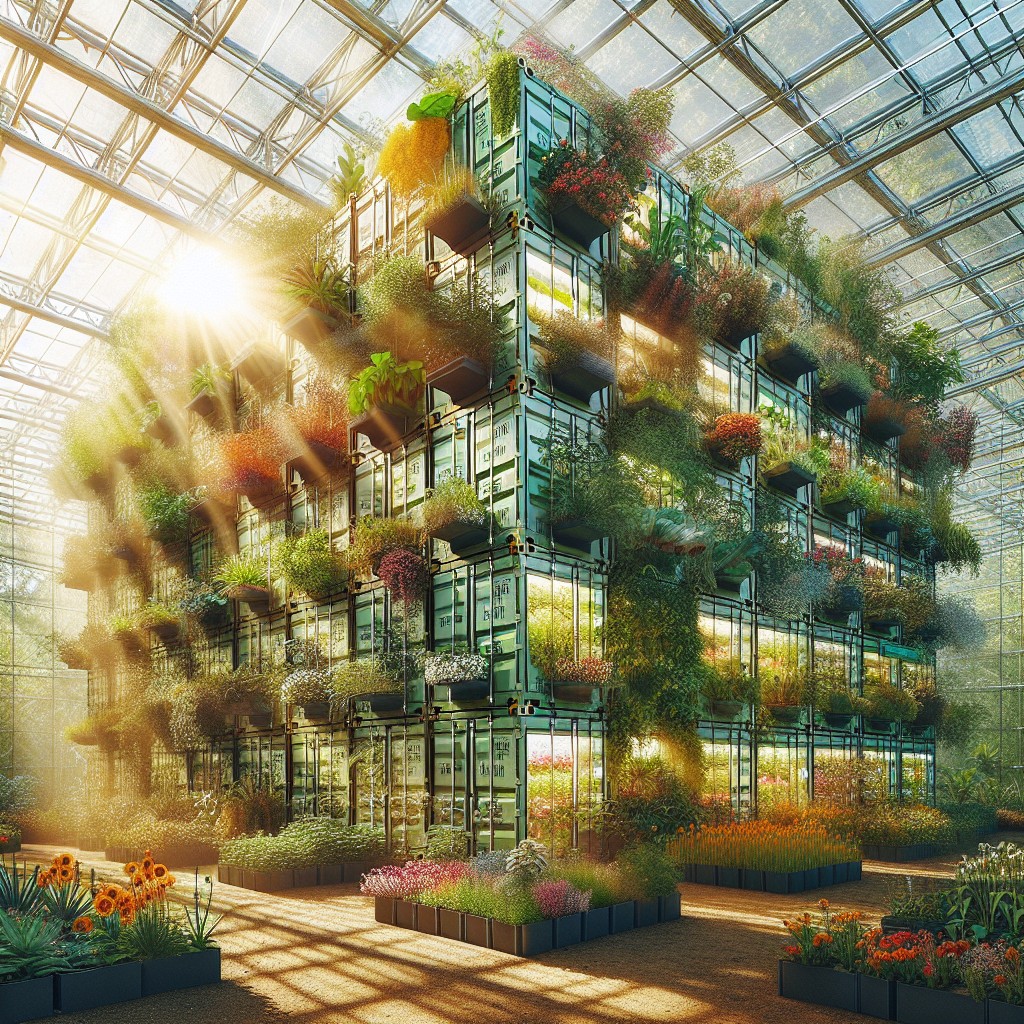
Transforming a shipping container into a greenhouse combines the robustness of industrial design with the nurturing environment plants require. The metal structure acts as a protective skeleton, while transparent panels can be installed in lieu of walls or on the roof, allowing ample sunlight to enter.
The interior can be fitted with vertical hydroponics or shelving systems to maximize space efficiency, ensuring every inch contributes to plant growth. Insulation is key to maintain a stable temperature, and adding a climate control system can regulate temperature and humidity for year-round cultivation.
Containers can be modified to include water collection systems and solar panels, further enhancing sustainability. The portable nature of container greenhouses offers the flexibility to relocate your garden to optimize seasonal light exposure, making it an innovative solution for urban farmers or those with limited land.
Livestock Housing Using Shipping Containers
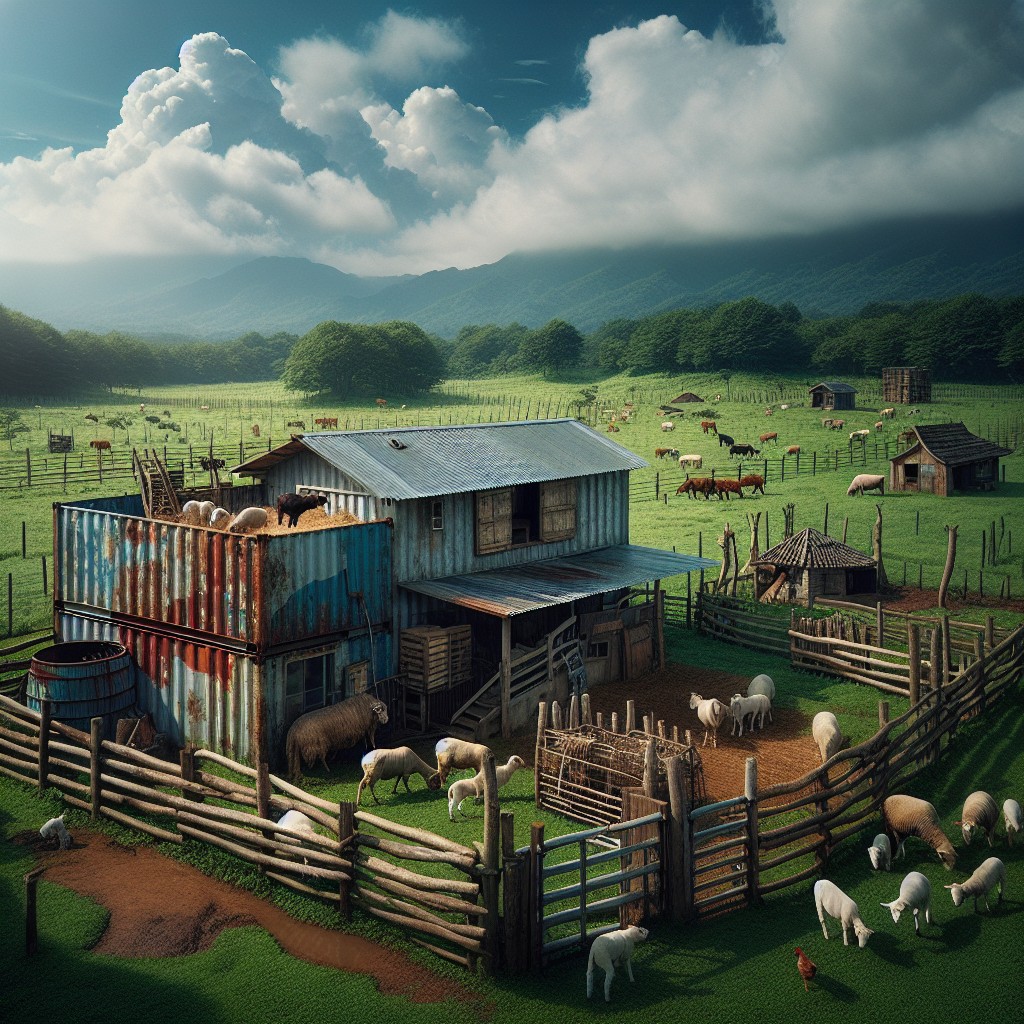
Shipping containers present robust structures for creating functional and comfortable spaces for livestock. Their modular design allows for easy customization, ventilation, and insulation modifications, ensuring animals stay healthy and secure.
Here’s how to transform these containers into optimal livestock housing:
- Ventilation: Cut out adequate openings for air circulation or install ventilation systems to maintain air quality and regulate temperature.
- Insulation: To keep the interior climate-controlled, spray foam or install panel insulation, particularly if the container is exposed to extreme weather conditions.
- Flooring: Consider replacing the original wooden container floor with materials that are easy to clean and disinfect, like concrete, to maintain hygiene.
- Feed and Water Systems: Incorporate automated water troughs and feed dispensers to simplify care routines.
- Access Points: Install multiple doors, ramps, or removable panels that provide easy access for animals and facilitate cleaning and maintenance.
- Lighting: Use solar-powered lights for a sustainable approach to ensure visibility when natural light is insufficient.
- Modifications for Specific Animals: Customize stalls and pens inside the container to suit the size and needs of different livestock species, from goats and sheep to pigs and cattle.
- Stackability: Take advantage of the container’s stackable feature for a space-saving vertical arrangement, particularly useful in limited spaces.
Shipping container barns can be both a cost-effective and environmentally-friendly approach to animal housing, as they reuse existing materials and can be adapted to various livestock needs.
Shipping Container Potting Shed
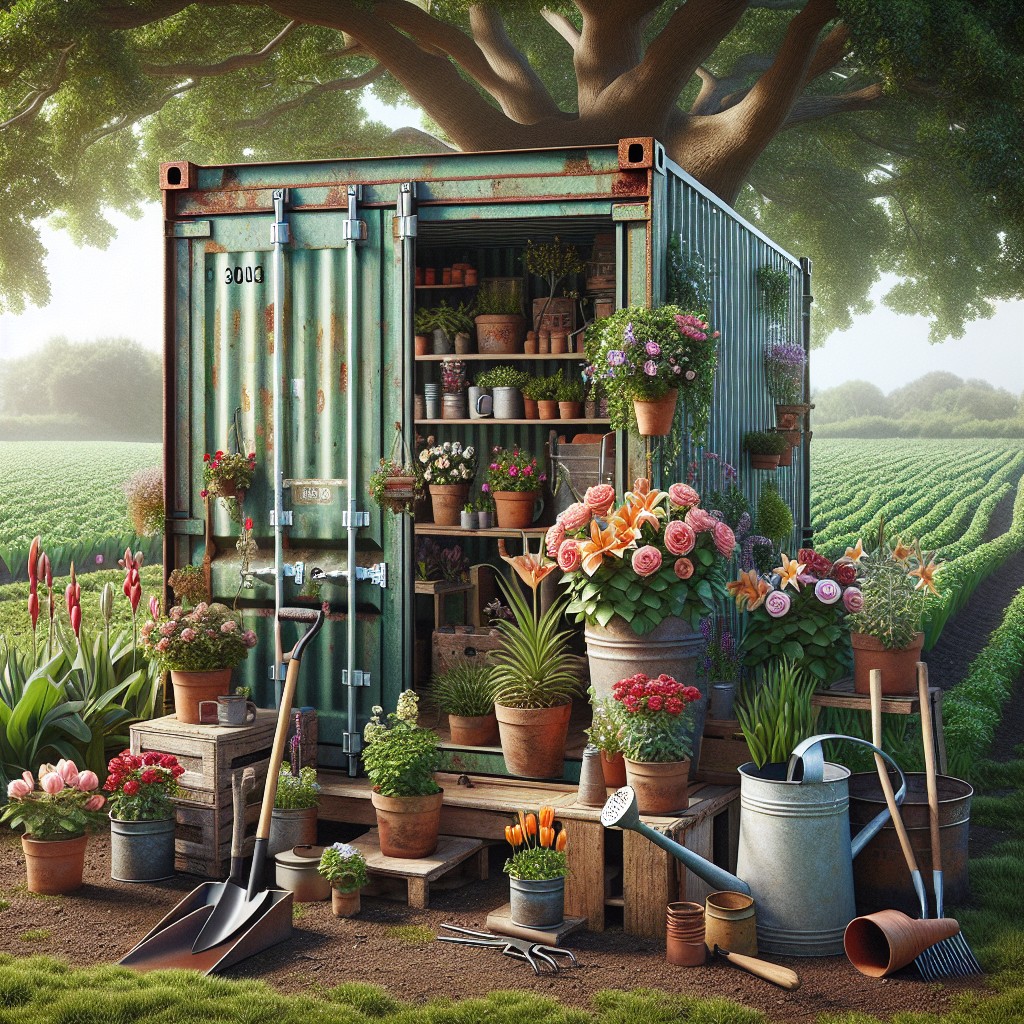
Transforming a shipping container into a potting shed offers gardeners a robust and weather-resistant space for their horticultural activities. Equipping the interior with shelves and potting benches creates an organized area to pot plants, while the addition of skylights or a roof cut-out increases natural light, promoting seedling growth.
Vertical gardening solutions, such as wall-mounted planters, optimize the use of space. Incorporating a rainwater harvesting system on the roof can lead to a sustainable water source for plants. Weather-proofing the container ensures that tools and plants are protected from the elements. Optional temperature control, through insulation or a small heating unit, can extend the growing season.
This setup not only recycles an unused container but provides a dedicated area for gardening enthusiasts to nurture their green thumb year-round.
Workbench and Workshop in a Shipping Container
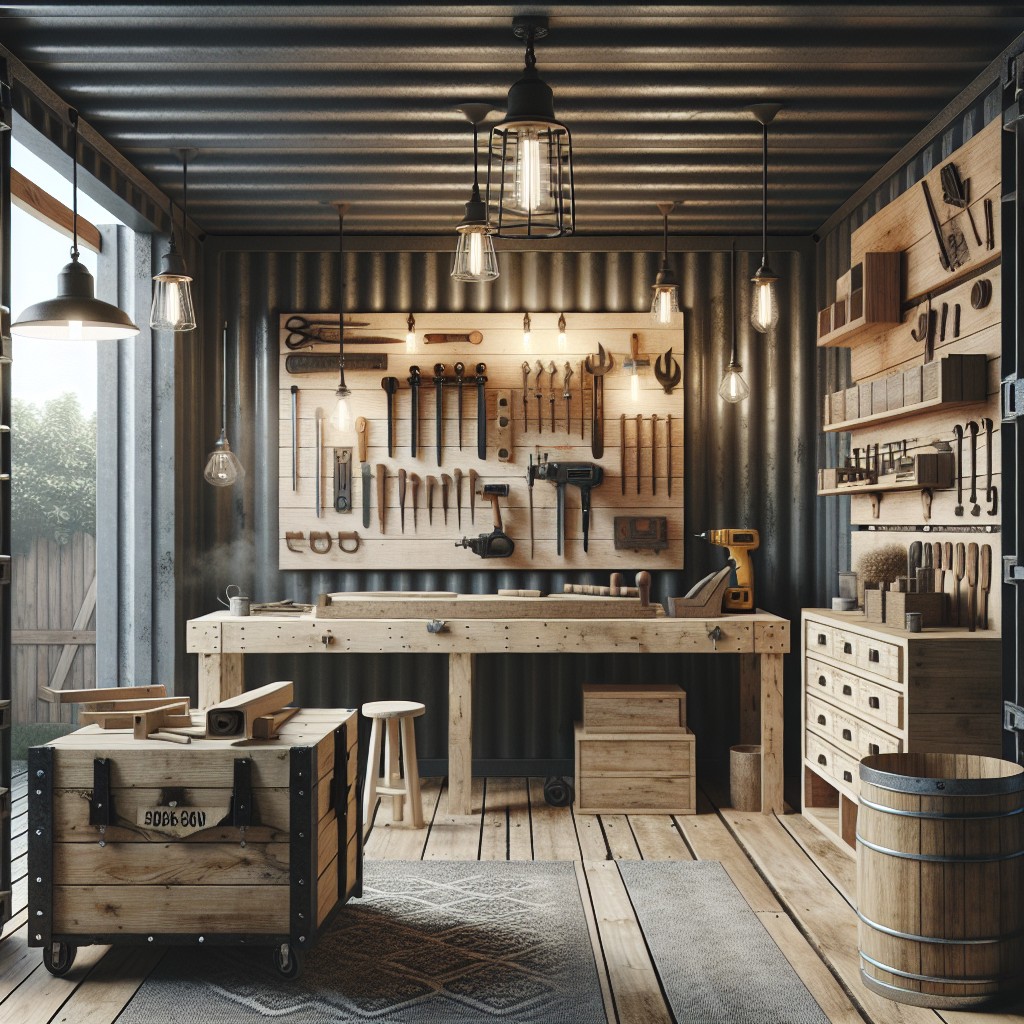
Transforming a shipping container into a workshop can create a compact and efficient space for DIY projects and repairs. Here are essential points to consider:
- Insulation: To maintain a comfortable working environment, proper insulation is vital. It prevents extreme temperatures inside the container during winter and summer.
- Lighting: Install adequate lighting to ensure visibility in all areas of the workshop. LED lights are energy-efficient and have a long lifespan.
- Ventilation: Proper air circulation is crucial when working with paints, solvents, or when welding. Consider adding vents or a small HVAC system.
- Power: Ensure you have an electrical setup that can handle the workshop’s power needs. It’s important to include enough outlets for tools and machinery.
- Storage: Maximize space with smart storage solutions. Wall-mounted pegboards, shelves, and magnetic strips can keep tools organized and accessible.
- Workbench: A sturdy workbench is at the heart of any workshop. Ensure it’s durable and the right height for comfort during long projects.
- Security: Reinforce doors and consider lockboxes since tools can be a target for theft. Security cameras or a simple lock system can offer peace of mind.
- Portability: If needed, the container workshop can be transported to different sites. This is useful for projects that require on-site work or if changing locations.
By incorporating these elements, you can have a fully functional workbench and workshop tailored to your specific needs within the unique space of a shipping container.
Shipping Container Recording Studio
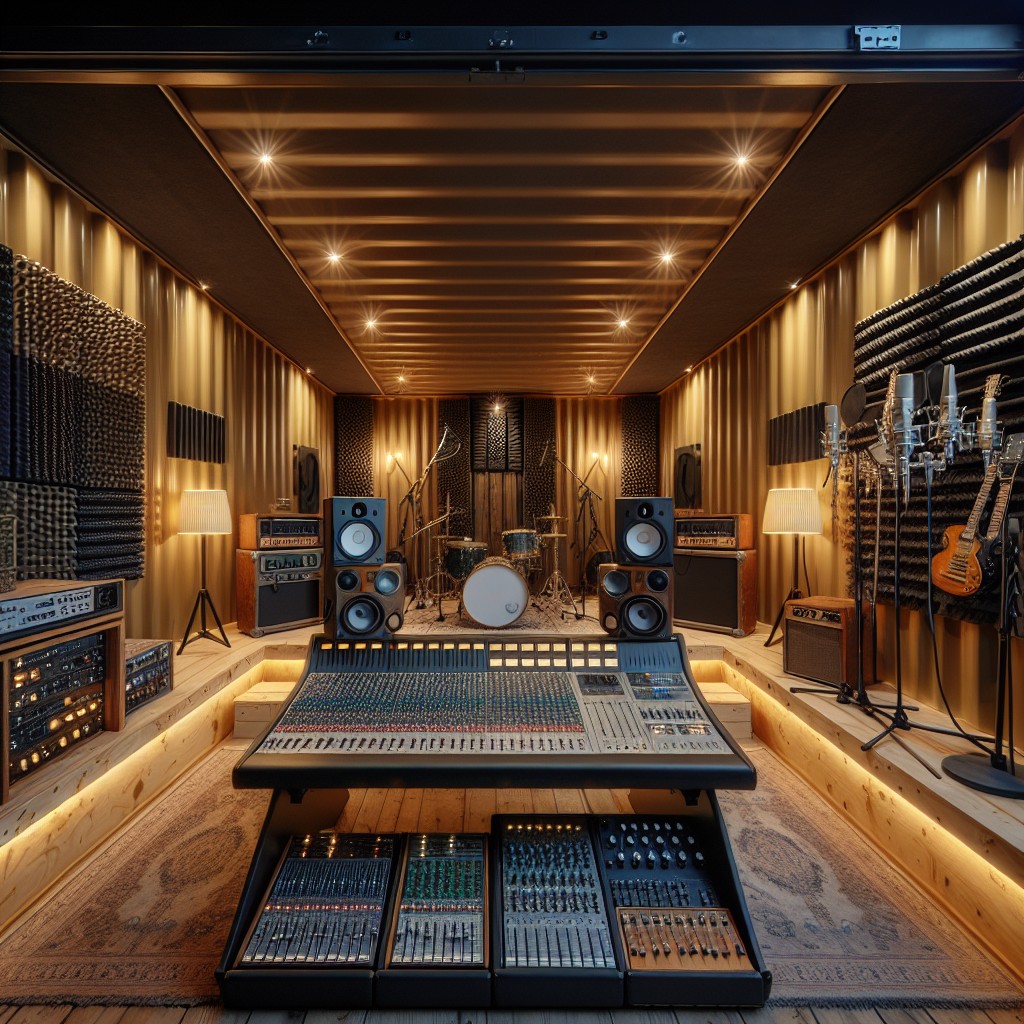
When designing a recording studio within a shipping container, sound insulation is paramount. High-density foam or fiberglass panels can be used to line the interior to buffer sound, ensuring minimal leakage. Ventilation is also a critical consideration; installing a silent ventilation system will maintain air quality without interfering with the audio. Electrical wiring should be planned to accommodate various equipment needs, including outlets equipped for studio-grade gear.
Furthermore, the dimensions of a shipping container offer a naturally long and narrow space, ideal for setting up control and live rooms. To optimize acoustics, consider adding modular elements like movable partitions or bass traps for sound quality control. Adequate lighting and a comfortable interior with sound absorption can also improve functionality.
Containers also offer the ability to expand; you could join multiple units for additional space or designated areas. Moreover, the inherent mobility of a container studio provides flexibility in location, making it possible to record in diverse environments or bring music production directly to events.
Stackable Shipping Container Barns

Maximizing vertical space can be crucial on a smaller plot of land. Utilizing stackable containers offers a robust solution for barn requirements. The steel structure of shipping containers makes them ideal for piling, providing a compact footprint with multiple levels of storage or operational space.
- Load Bearing Capabilities: The lower containers can support significant weight, allowing the upper levels to be used for lighter storage or office spaces.
- Customizable Layouts: Each level can be designed with various purposes in mind, such as the ground floor for heavy machinery and the upper levels for feed or product storage.
- Accessibility Features: Add external staircases or freight elevators for ease of access to the upper containers.
- Design Flexibility: Containers can be cut and joined to create larger spaces on any level, with options for windows, doors, and insulation as needed.
- Modularity: Expanding or modifying your barn becomes more manageable as your needs change, without the necessity of traditional construction.
This approach to barn building not only saves space but also offers the adaptability necessary for evolving farm operations.
Tiny Guest House in a Shipping Container
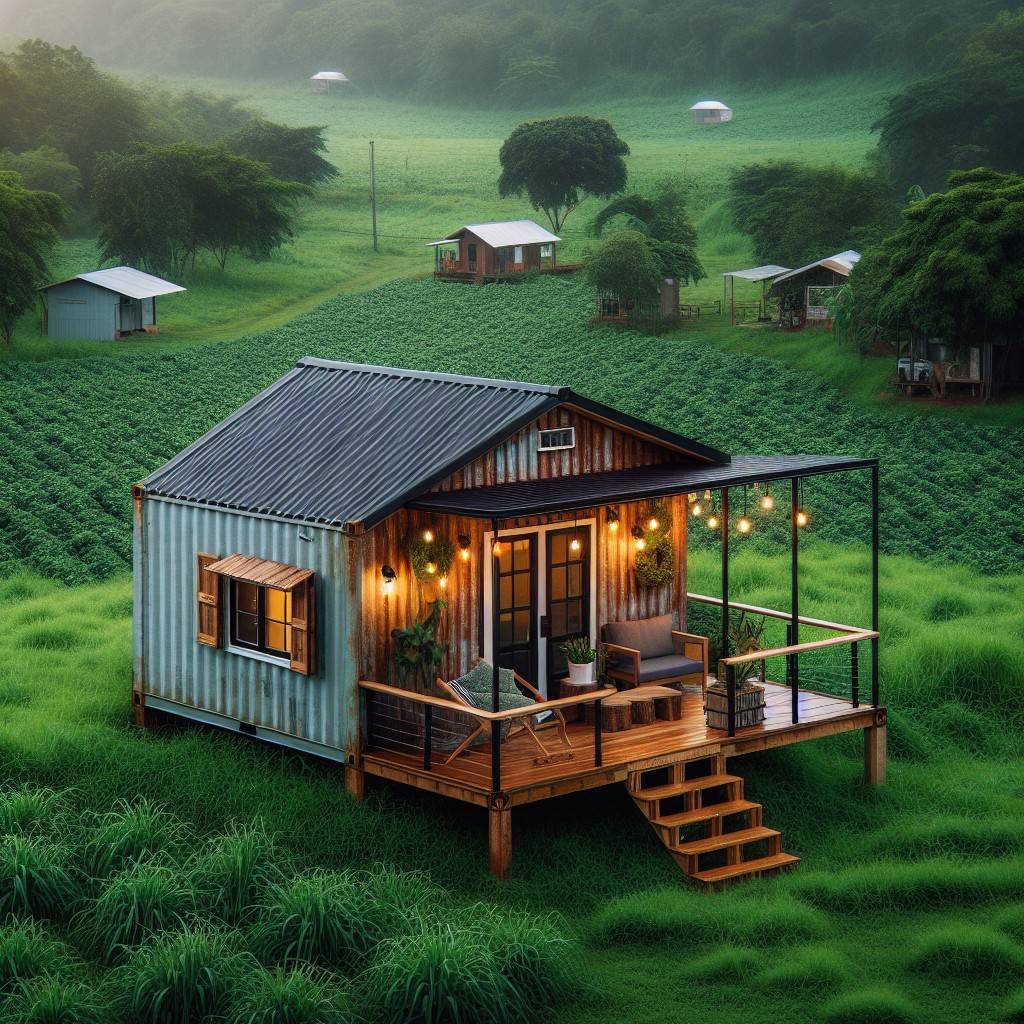
Transforming a shipping container into a cozy guest house is a compact and creative way to accommodate visitors. The compact dimensions make efficient use of space, allowing you to craft a comfortable sleeping area, a small kitchenette, and even a bathroom with clever design strategies. Insulation is key to ensuring year-round comfort, with spray foam being a popular choice for its effectiveness in both thermal regulation and preventing moisture build-up.
For a personal touch, installing large windows or glass doors can connect the interior space to the outdoors, providing ample natural light and a sense of openness. When it comes to electricity and plumbing, consider employing professionals to ensure safety and compliance with local building codes. For a sustainable approach, you might incorporate solar panels for power and a rainwater collection system.
To maximize space, fold-down furniture or built-in storage are pragmatic solutions. Decorate with multipurpose items and choose light, neutral colors to give an illusion of a larger space. Outdoor decks or patios can serve as charming extensions to the living area, perfect for guest entertainment or relaxation. Remember, with creativity and careful planning, you can turn a simple container into a tiny sanctuary that leaves a lasting impression on your guests.
Children’s Playhouse in a Shipping Container
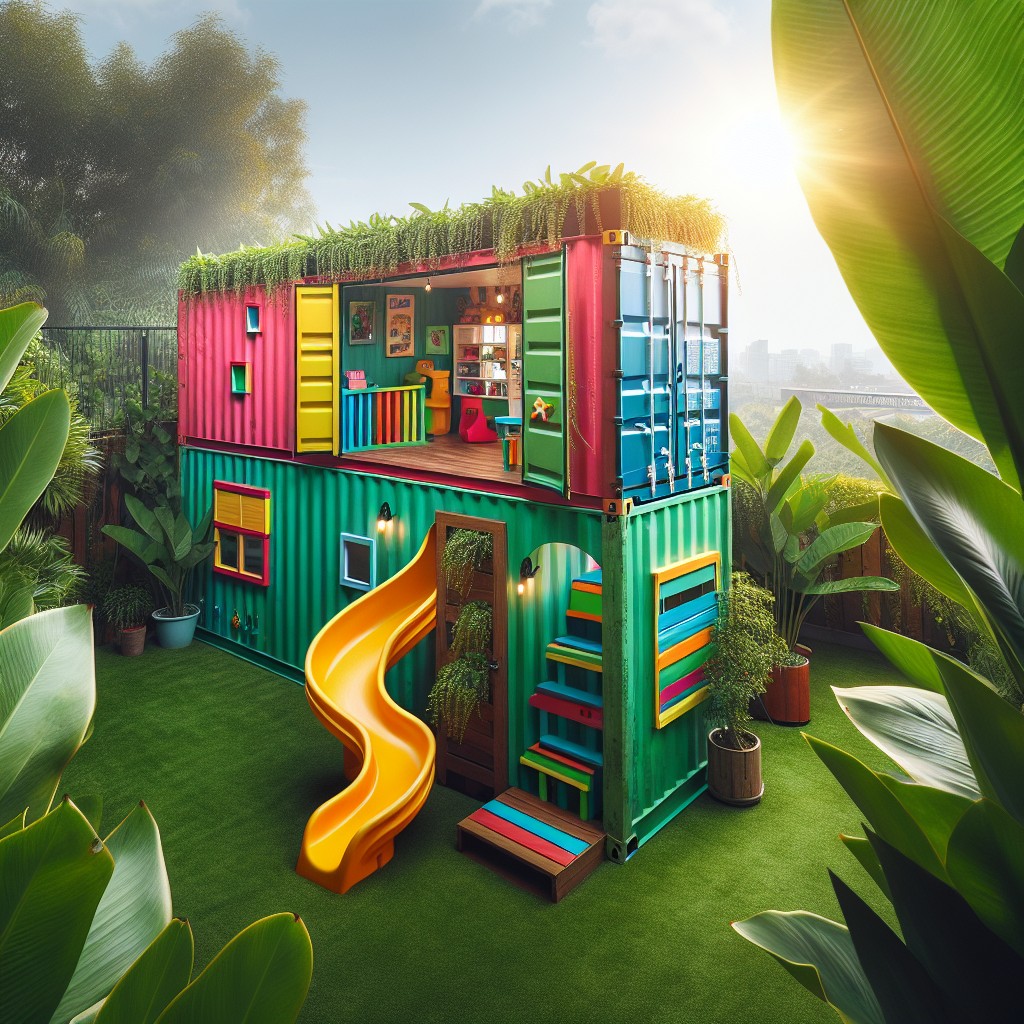
Transforming a shipping container into a playhouse offers a creative and secure space for children to let their imaginations run wild. When designing a container playhouse, insulation is a key factor to create a comfortable and seasonally adaptable environment. Equipping the space with proper ventilation ensures a healthy airflow while adding windows will bring in natural light, enhancing the play area.
Safety should be at the forefront of your design—smooth any sharp edges and ensure that paints and materials used are non-toxic. Incorporating vibrant colors, chalkboard walls for artistic expression, and built-in storage for toys will make the space both stimulating and organized.
Consider a theme to captivate young minds, like a spaceship for aspiring astronauts or a castle for little royals. An easy-to-open door customized to pint-size users promotes independence as they enter their miniature haven. For outdoor fun, a rooftop garden can double as a learning tool and a play feature, emphasizing sustainable living practices from a young age.
Shipping Container Machinery Shed
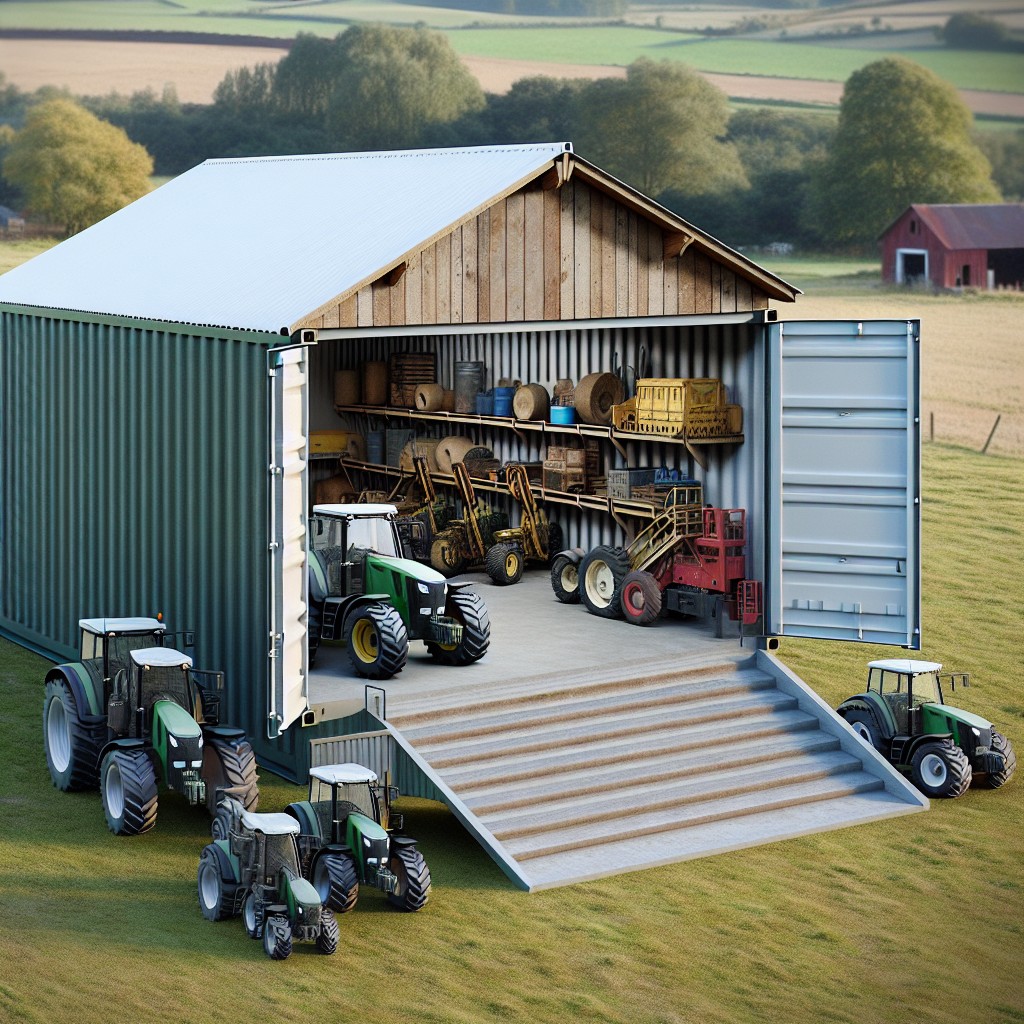
Transforming a shipping container into a machinery shed offers a sturdy and secure space to store and maintain tools and heavy equipment. The modular nature of containers allows for easy scalability, you can add more units as your storage needs grow.
With their inherent weather resistance, containers protect sensitive machinery from the elements, reducing rust and wear. Customization options include adding shelving systems, insulation for temperature control, and installing lockboxes for added security. Proper ventilation is also essential to prevent moisture build-up inside the shed.
Electrical wiring can be integrated for lighting and power tools, creating an efficient workspace. Opt for high cube containers for extra vertical space if you’re planning to store tall equipment or vehicles. Remember to consult local building codes and regulations to ensure your shed meets legal requirements.
Mobile Shipping Container Food Stall
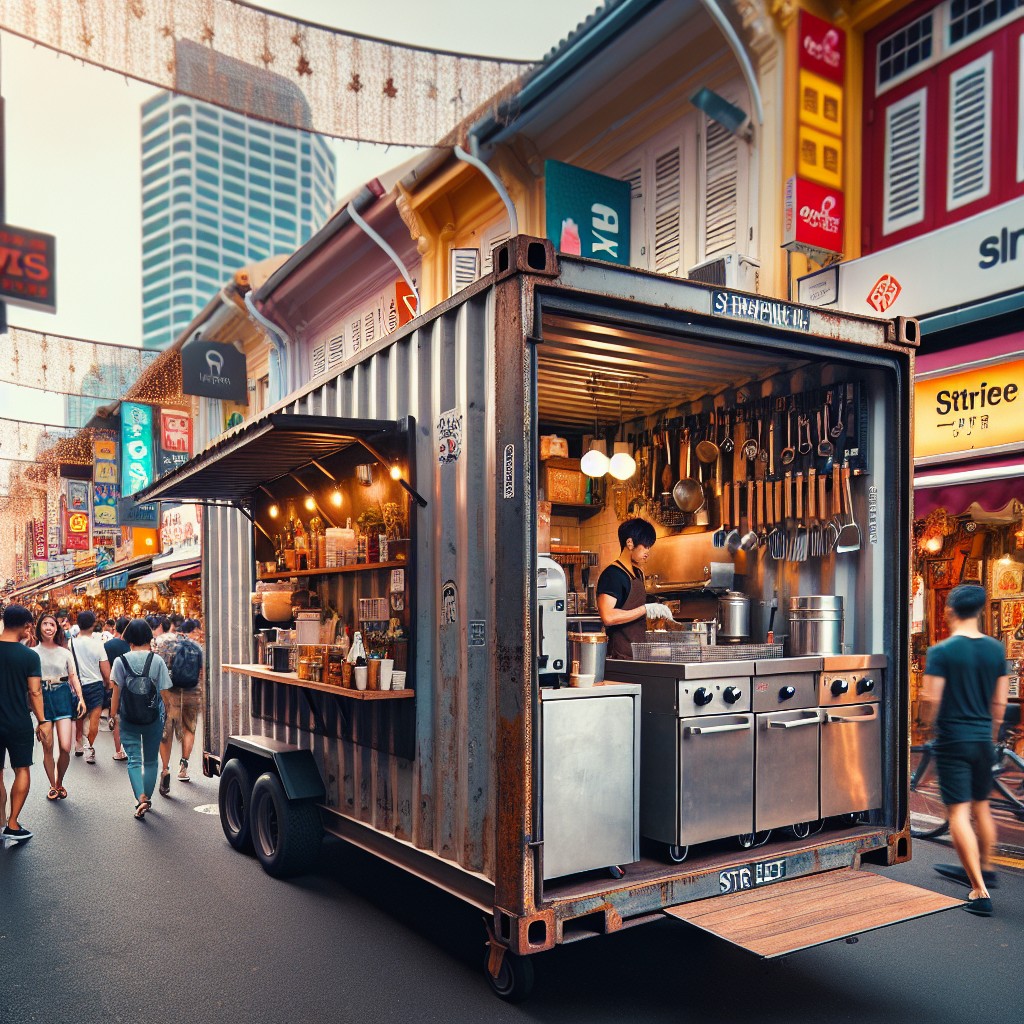
Harnessing the innate mobility of shipping containers, entrepreneurs can create versatile and relocatable food stalls. These structures provide ample room for kitchen equipment and serve as an efficient space for food preparation and sales. The modular nature allows for customization that can align with brand aesthetics or functional needs, such as fold-out counters for serving customers or retractable awnings for weather protection.
To enhance functionality, consider incorporating these features:
- Sliding service windows: Facilitate easy interaction with customers and efficient food service.
- Insulation and ventilation: Ensure comfortable working conditions and manage cooking temperatures.
- Built-in storage: Optimize space for storing ingredients, utensils, and equipment securely.
- Electrical and plumbing systems: Equip your stall with running water and reliable power sources for appliances.
- Secure lock systems: Protect your business and assets when the stall is not in operation.
With these adaptions, a shipping container food stall not only serves its purpose effectively but also stands out as a sustainable, transportable business model that can go anywhere the market flows.
Shipping Container Cafe
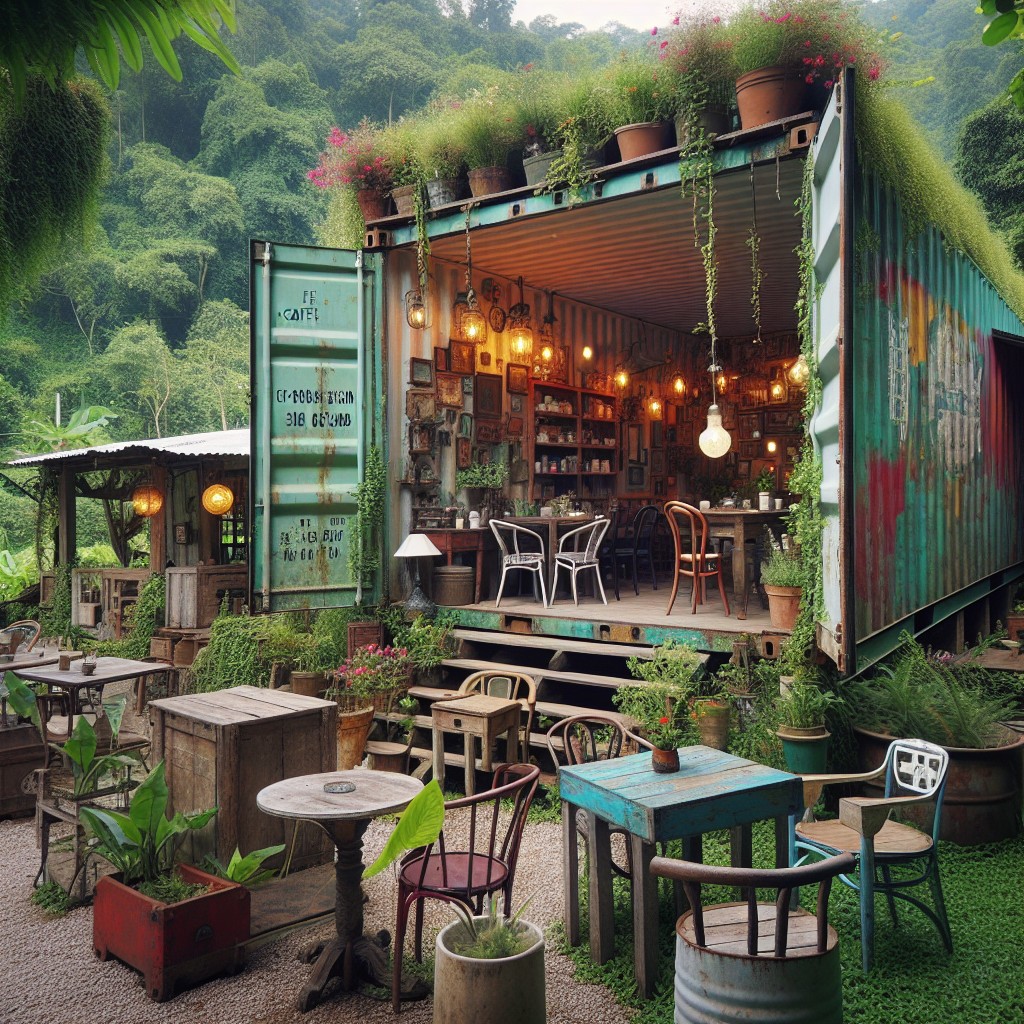
Transforming a shipping container into a cafe presents a novel and environmentally conscious way to serve your community. The structure’s inherent durability and modular design make it ideal for crafting a unique dining space.
With this innovative approach, you can incorporate expansive glass panels for natural light and an open feel, fostering a welcoming ambience. Wood cladding or green walls can be added to soften the industrial aesthetic, ensuring the cafe blends with its surroundings.
The interior layout should prioritize efficiency, with a well-planned serving counter, kitchen area, and customer seating. By installing foldable counters or retractable windows, you can create an interactive street-front presence, inviting passersby.
Remember to include energy-efficient appliances, LED lighting, and possibly solar panels to minimize overheads while promoting sustainability. Lastly, customized branding with paint or decals can turn the container cafe into a focal point, encouraging social media shares and higher visibility.
Multistorey Shipping Container Barn
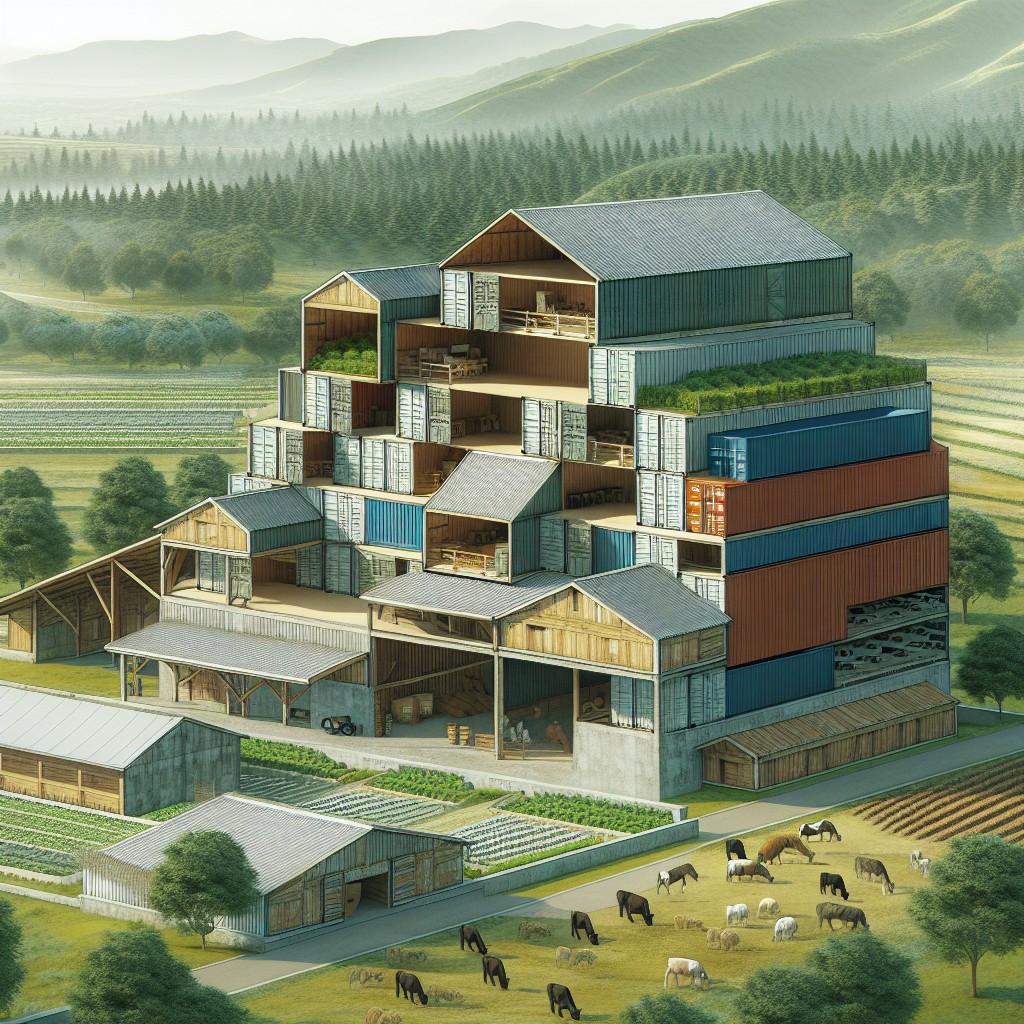
Elevating your storage and workspace capabilities, a multistory design utilizes vertical space efficiently. Start by laying a solid foundation to ensure stability for stacking containers. Welding and reinforcement at connection points prevent shifting.
Incorporate internal or external staircases for access to upper levels, considering the layout and flow of activities. Cut through floors and ceilings to create large open spaces where needed, but always consult with an engineer to maintain structural integrity.
Ventilation and insulation are key for a comfortable interior environment, especially in varying climates. Large windows, skylights, and strategically placed doors enhance natural lighting and air circulation. For added utility, consider electrical and plumbing installations by professionals, following local building codes.
Finally, apply weather-resistant paint and roof treatments to safeguard against the elements. This approach not only maximizes space on a limited footprint but also provides the flexibility to tailor multi-functional areas within your barn structure.
Shipping Container Darkroom
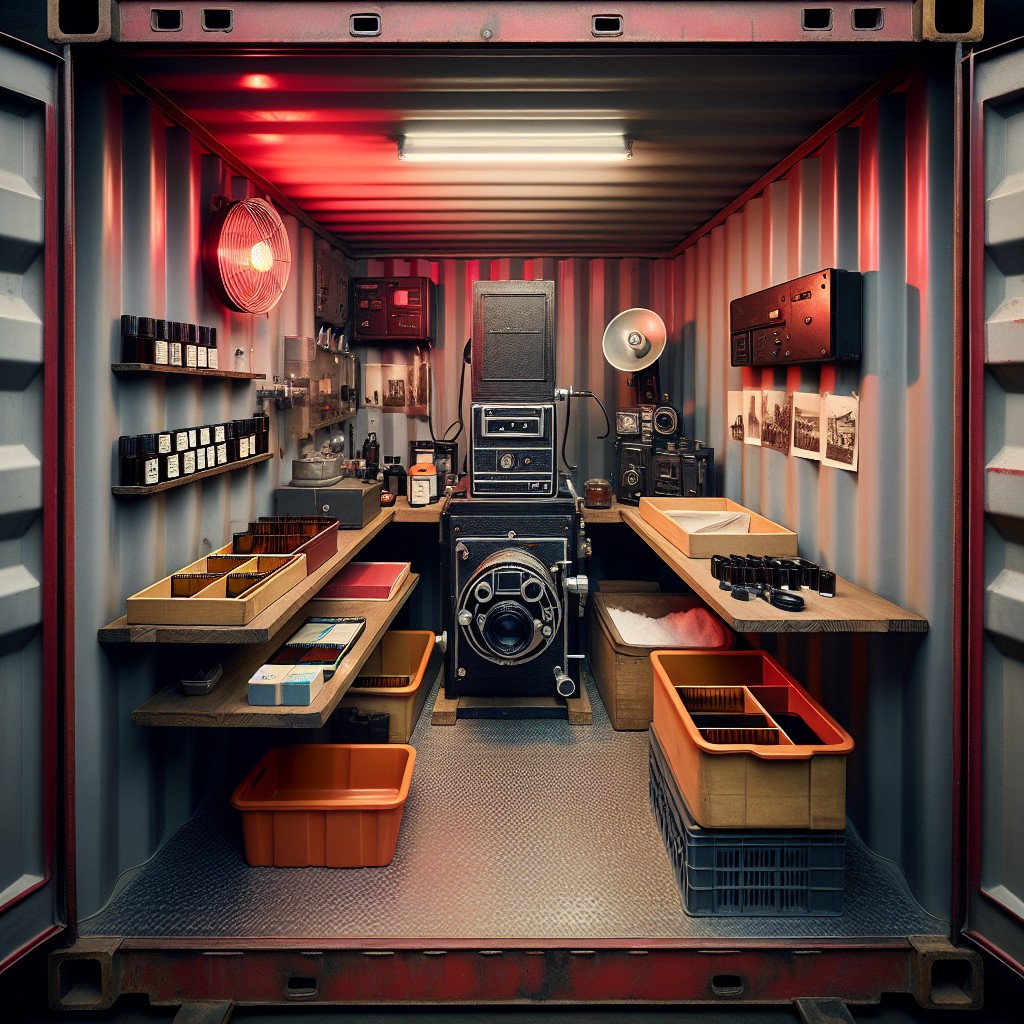
Transforming a shipping container into a darkroom offers photographers a secure, light-tight, and customizable space for photographic development. Given its compact nature, a container provides a perfect environment for controlling light and temperature, key factors in film processing.
When designing your darkroom, first, ensure that the container is completely sealed to prevent light leaks. You can achieve this by reinforcing doors and seams with light-proof materials. Ventilation is also crucial to dispel chemical fumes, so consider installing an exhaust fan.
The interior layout should include a dry and a wet area. The dry area is where you’ll handle unprocessed film and photographic paper, so it should be organized with sufficient space for enlargers and safe lights. The wet area will contain your developing trays, chemicals, and wash stations, with materials resistant to moisture and chemical spills.
Insulation is essential to maintain a stable internal temperature, which is particularly beneficial for consistent chemical processing. Additionally, storage solutions such as shelves and cabinets will help keep your equipment and chemicals neatly organized.
For convenience, plan an electrical layout to power equipment and provide lighting suited to darkroom work. Consider using red or amber safelights that are bright enough to work under but do not expose photosensitive materials.
Remember, personal safety is paramount, so include a first aid kit and ensure all electrical sockets are waterproofed to prevent electric shock in the wet area. Keep a clear workflow from film loading to developing and drying, and your shipping container darkroom will be both functional and efficient.
Shipping Container Stables for Horses
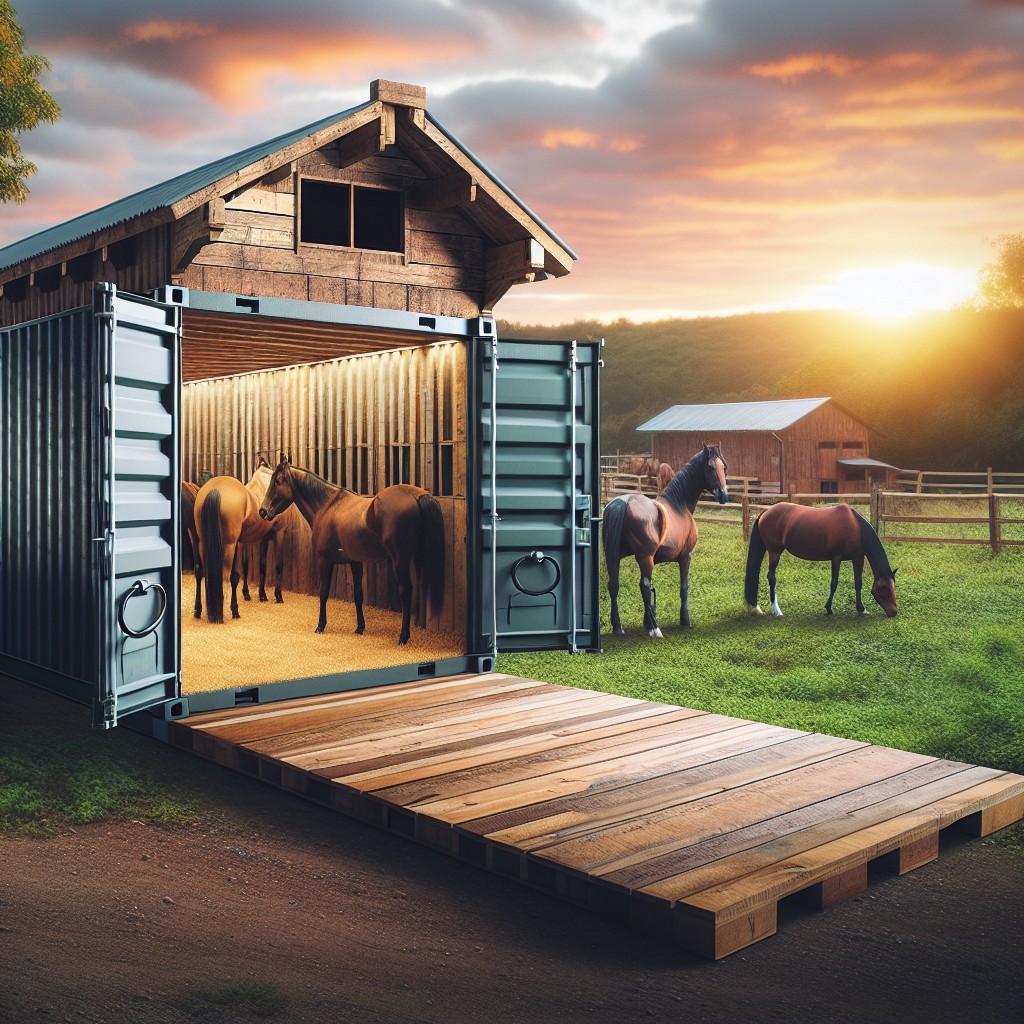
Converting a shipping container into a stable provides a secure and durable housing solution for horses. The steel structure resists decay, pests, and weather, ensuring a stable environment for your equine companions.
When outfitting a container as a stable:
- Customize the interior with proper insulation to maintain a comfortable temperature and prevent condensation.
- Install adequate ventilation systems to ensure a constant supply of fresh air and to help control humidity levels.
- Fit rubber matting on the floor to provide comfort and reduce the risk of injury.
- Cut out windows or openings for natural light; consider strong, secure grills or mesh to keep the animals safe.
- Plan for stall divisions and doors, ensuring they are smooth without any sharp edges to prevent any harm to your horses.
This approach enables a modular design, easily expandable should the need for more space arise. Opting for a container stable often reduces construction time significantly in comparison to traditional wooden or brick stables.
Shipping Container Cold Storage
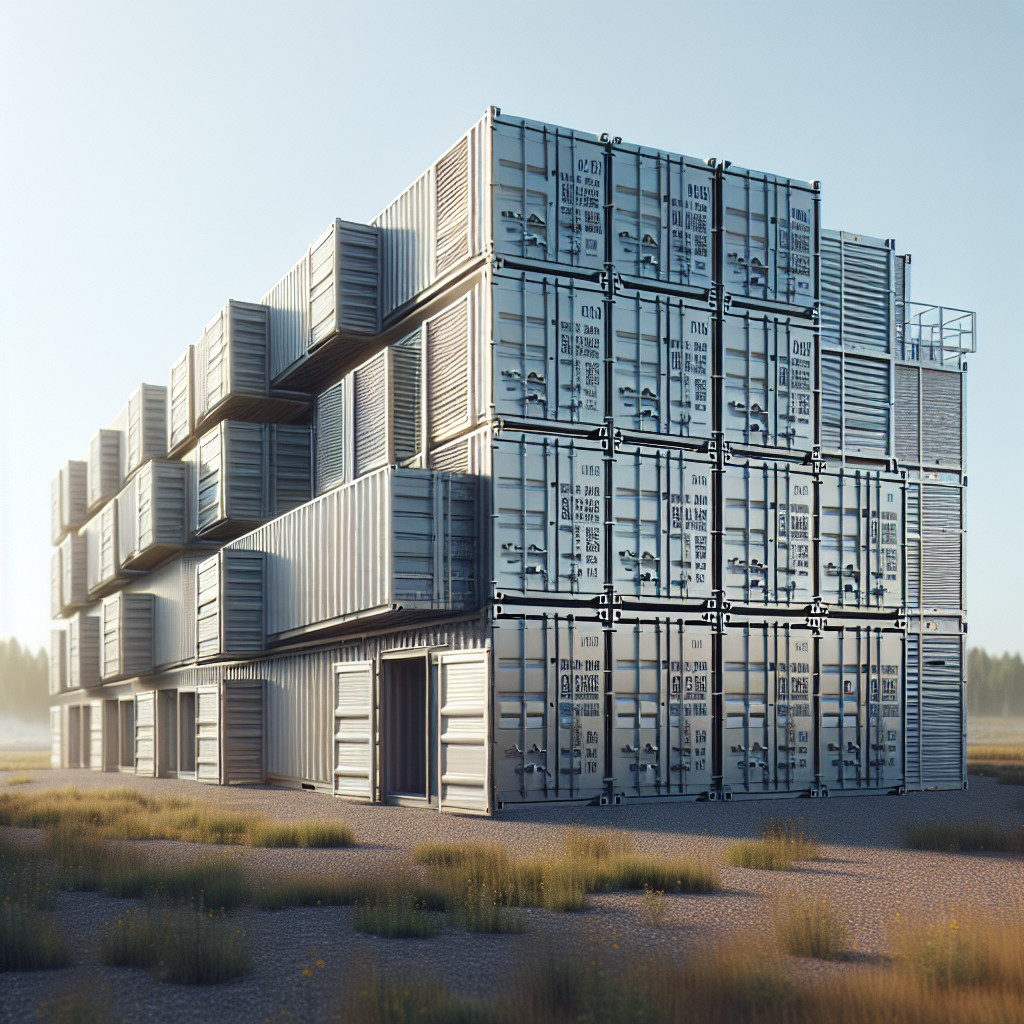
Adapting a shipping container for cold storage is an efficient, space-saving solution for preserving perishable items. The inherent insulation properties of steel walls make containers ideal for maintaining low temperatures, with only minor modifications required.
To set up a container for cold storage, consider the following:
- Insulation Upgrade: Add extra insulation to the walls, ceiling, and floor to ensure temperature control and energy efficiency. Closed-cell spray foam insulation is often recommended for its high R-value and moisture-resistant properties.
- Cooling System: Install a refrigeration unit tailored to your specific temperature needs. This could range from a simple air conditioning unit for a chilled environment to a more complex refrigeration system for freezing conditions.
- Shelving and Storage Systems: Maximizing vertical space with shelving helps organize goods and increases storage capacity. Ensure shelves are made from materials suitable for cold environments and are secured to handle the dynamic weight loads.
- Weatherproofing: Seals around the doors must be checked and reinforced if necessary to prevent warm air from entering and cold air from escaping, thus ensuring optimal energy efficiency.
- Power Supply: Ensure a reliable power source for the refrigeration unit, which may require a dedicated electrical circuit. For off-grid locations, solar panels or generator backup could be an option.
By converting a shipping container into a cold storage unit, you gain a versatile, portable, and cost-effective solution for agricultural produce, floral business inventory, or any temperature-sensitive goods.
Home Theater in a Shipping Container
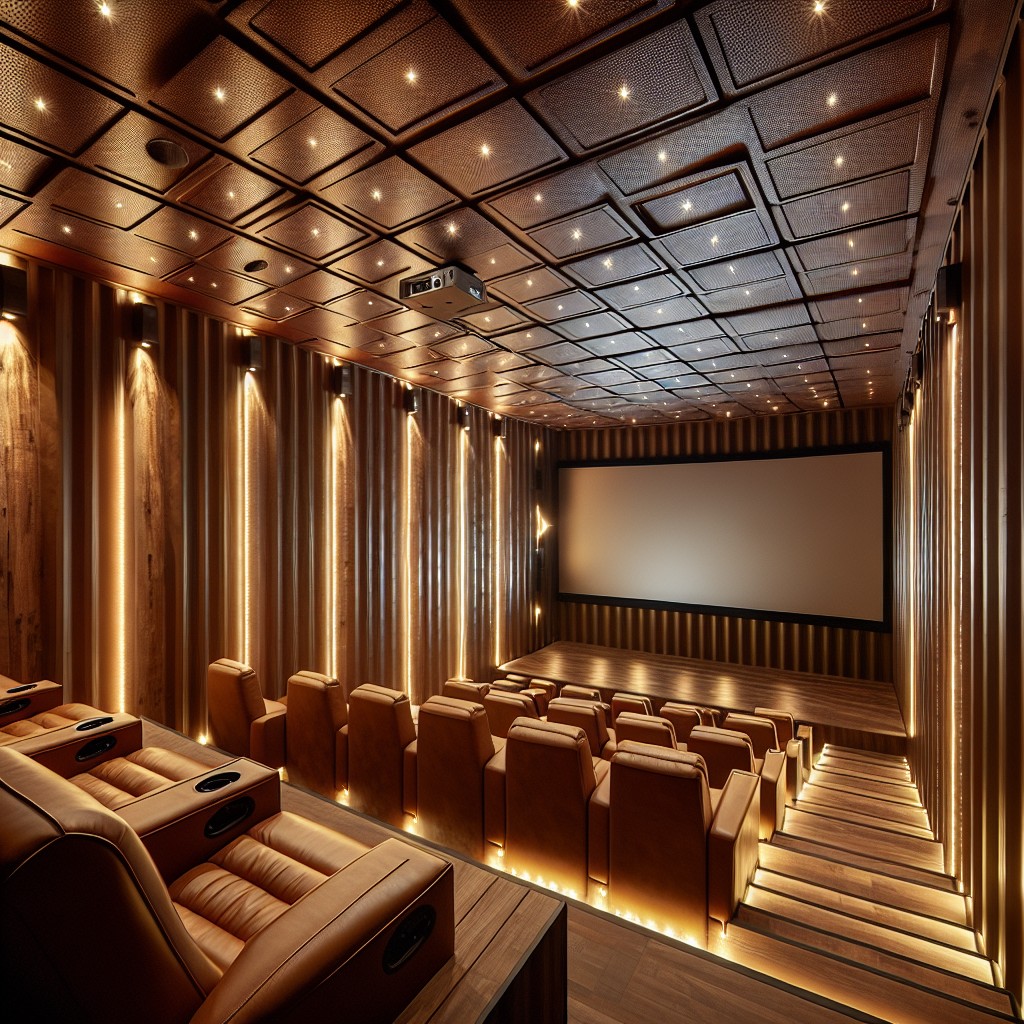
Transforming a shipping container into a home theater combines the benefits of sound insulation inherent in its steel structure with the flexibility of interior design. For an immersive cinematic experience, consider incorporating the following elements:
- Soundproofing: Add additional layers of insulation inside the container to prevent sound leakage and to enhance the acoustics within the space.
- Seating: Install comfortable tiered seating that maximizes visibility and provides a genuine theater ambiance.
- Projection and Sound System: Opt for a high-quality projector and surround sound system to create a rich audio-visual environment. Make sure the system aligns well with the container’s dimensions to avoid any distortions.
- Ventilation: As containers are airtight, include adequate ventilation to manage airflow without noise interference.
- Lighting: Create a dimmable lighting system that gives you control over the ambiance during screenings.
- Interior Finishing: Use non-reflective materials and dark colors for walls and ceilings to absorb light and prevent glare on the screen.
- Connectivity: Ensure there are ample power outlets and options for internet connection to stream content or hook up various devices.
Planning ahead for these features will not only optimize your viewing experience but will also make your container home theater a distinctive and functional space within your property.
Shipping Container Artist Studio
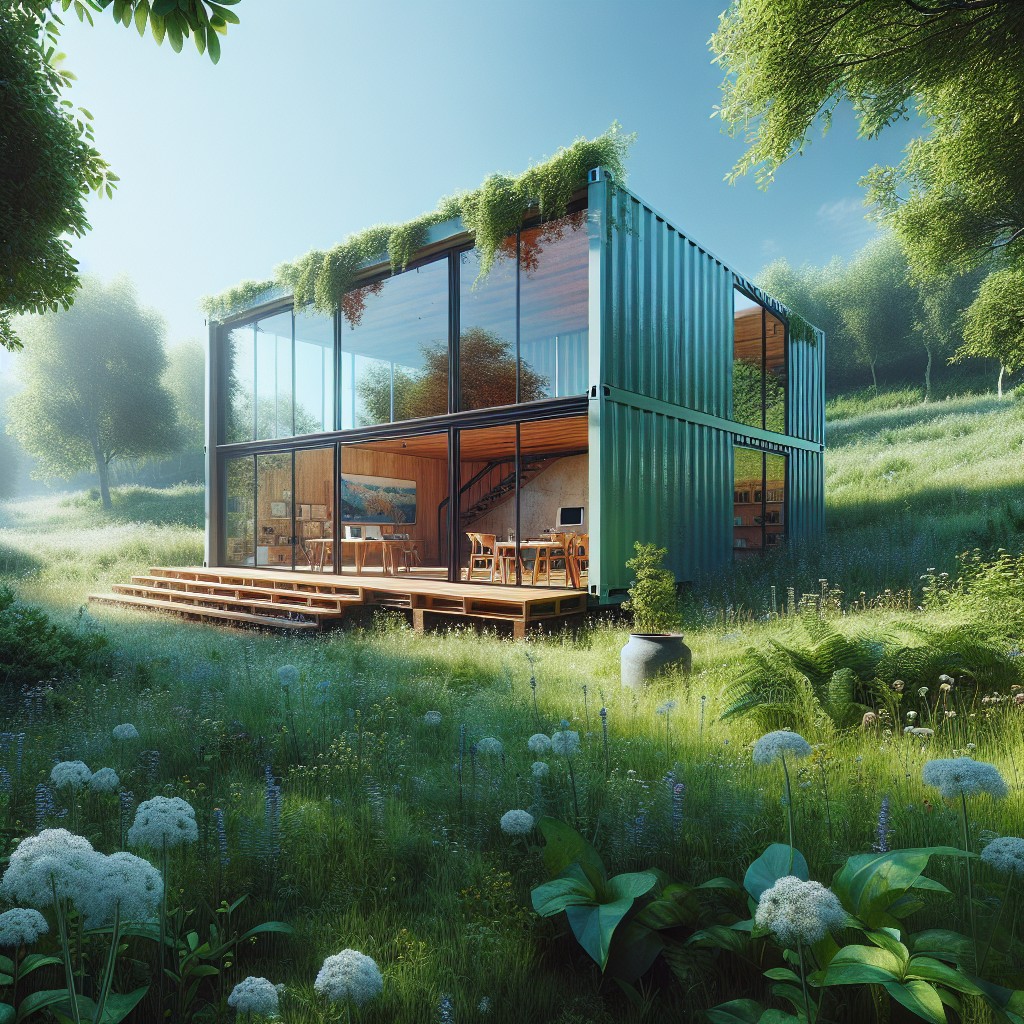
Transforming a shipping container into an artist studio provides creatives with a unique and eco-friendly space to harness their craft. The benefits are numerous: the studio is portable, customizable, and merges industrial chic with functionality.
A few windows can be cut out for natural light—a crucial element for any artist. Insulation is key for comfort, ensuring the space is conducive to work in both hot and cold climates. The durable nature of shipping containers also provides a secure environment for expensive art supplies and works-in-progress.
With the addition of shelves and storage solutions, the studio can be efficiently organized. Flooring options range from polished concrete to laminates, each adding a different aesthetic to the creative atmosphere. For outdoor synergy, consider a container with doors that open to the surroundings, inviting nature into the creative process.
Electrification allows for lights, a heating system, and perhaps even a sound system to set the mood. With these modifications, a shipping container art studio becomes a personalized sanctuary for creativity to flourish.
Shipping Container Chicken Coop
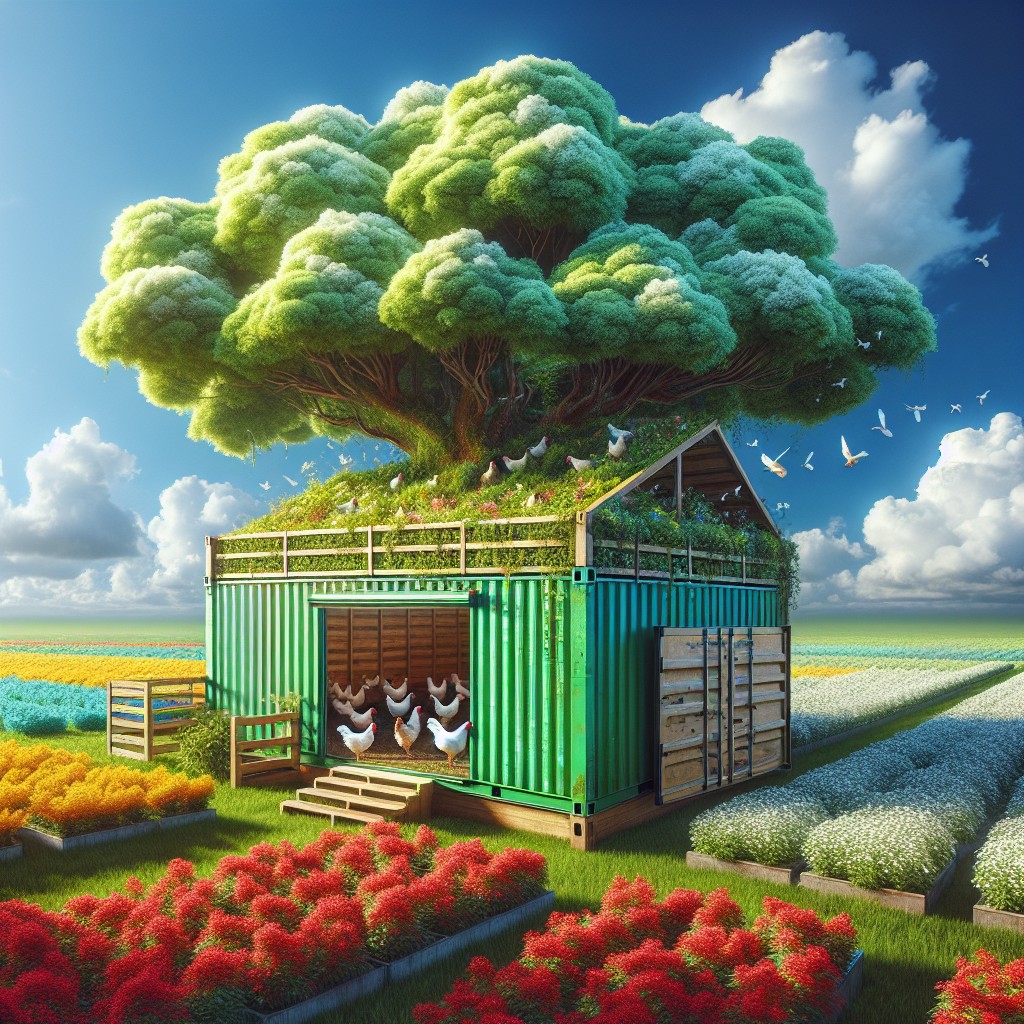
Transforming a shipping container into a chicken coop offers an innovative and sturdy solution for poultry enthusiasts. The metal structure provides excellent protection from predators and extreme weather conditions, ensuring the safety and comfort of the chickens.
Here’s how to make the most of this concept:
- Insulation: To maintain a comfortable interior temperature, insulate the walls and ceiling. Spray foam or rigid panels work well.
- Ventilation: Install vents or windows to ensure proper air circulation, which is crucial for the health of the chickens.
- Lighting: Natural light can be supplemented with LED bulbs to regulate laying cycles and provide warmth during colder months.
- Interior Layout: Create a design that includes nesting boxes, roosting bars, and ample space for movement. Removable trays beneath roosting areas facilitate cleaning.
- Outdoor Access: A secure run attached to the coop allows chickens to forage and exercise while protected from predators.
- Durability: Use marine-grade paint to protect the exterior against rust and decay, reinforcing its longevity.
By carefully considering these points, a shipping container can become an efficient and sustainable chicken coop, meeting the needs of the birds while offering a robust, long-lasting structure.
Shipping Container Fish Farm
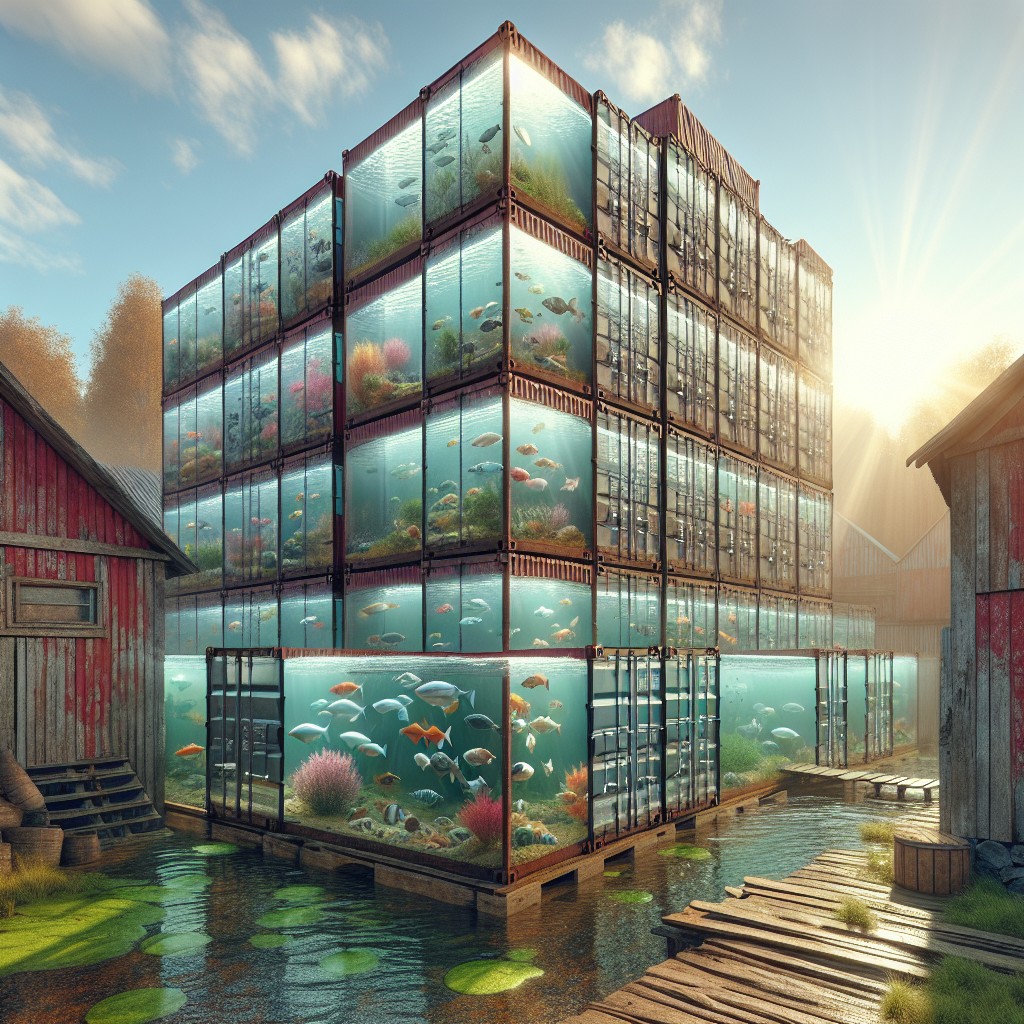
Aquaculture, or fish farming, is a booming industry, and when space or environmental control is an issue, repurposing a shipping container can be an economical and scalable solution. Here are some key considerations for establishing a shipping container fish farm:
- Insulation: Proper insulation is vital to maintain water temperature and ensure the well-being of the fish.
- Filtration Systems: Implement high-quality water filtration systems for maintaining a clean environment and recycling water efficiently.
- Aeration Equipment: Good oxygen circulation is crucial for healthy fish. Install aerators or oxygenators to keep the water oxygenated.
- Energy Sources: Consider renewable energy sources like solar panels to power the pumps, aerators, and other equipment.
- Aquaponics Integration: Maximize space and productivity by combining the fish farm with hydroponic plant production, creating symbiotic systems where plants use fish waste as nutrients.
By focusing on comprehensive aquaculture systems, converted shipping containers can be transformed into thriving environments for fish farming, allowing for high-density cultivation with relatively low start-up costs.
Luxury Pet House in a Shipping Container
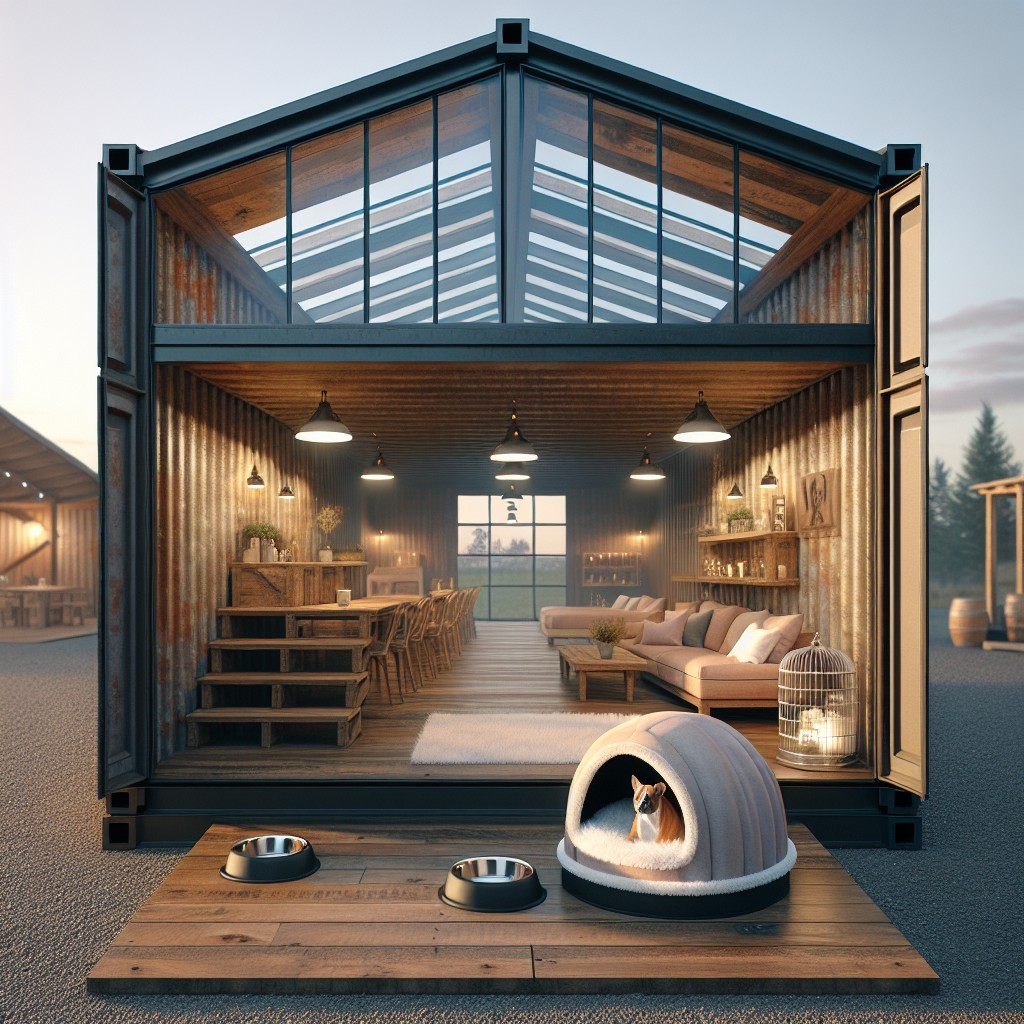
Transforming a shipping container into a lavish abode for pets merges the rugged functionality of industrial design with the comforts of modern living. It offers a unique and sustainable way to provide a dedicated space for animals while being stylish and practical.
Key considerations for a luxury shipping container pet house include:
- Insulation: High-quality insulation is crucial for maintaining a comfortable temperature for pets year-round.
- Ventilation: Proper airflow prevents moisture buildup and ensures a fresh environment, vital for animal health.
- Durable Interior: Scratch and bite-resistant materials within the interior safeguard the container’s longevity against pet wear and tear.
- Natural Light: Incorporating windows or a skylight can keep the space well-lit and inviting.
- Creature Comforts: Incorporate plush bedding, activity areas, and automated feeders and water systems for the ultimate creature comfort.
- Outdoor Access: A doggy door or similar access point allows for seamless indoor-outdoor living, giving pets the freedom to roam.
- Customization: Personal touches such as painting the container in vibrant colors or adding pet murals create a cheerful atmosphere.
Designing with the pet’s needs in mind ensures a harmonious balance between human aesthetics and animal well-being.
Ideas Elsewhere
- https://www.coastalhire.com.au/blog/ways-to-use-a-shipping-container/
- https://www.garagejournal.com/forum/threads/shipping-container-workshop-need-your-ideas-photos.163845/
- https://containerone.net/blogs/news/shipping-container-barn-ideas-for-your-next-project
- https://www.shippingcontainerdepot.com/shipping-container-shed-ideas/
- https://containermarkets.com/affordable-container-design-ideas-budget/
Table of Contents
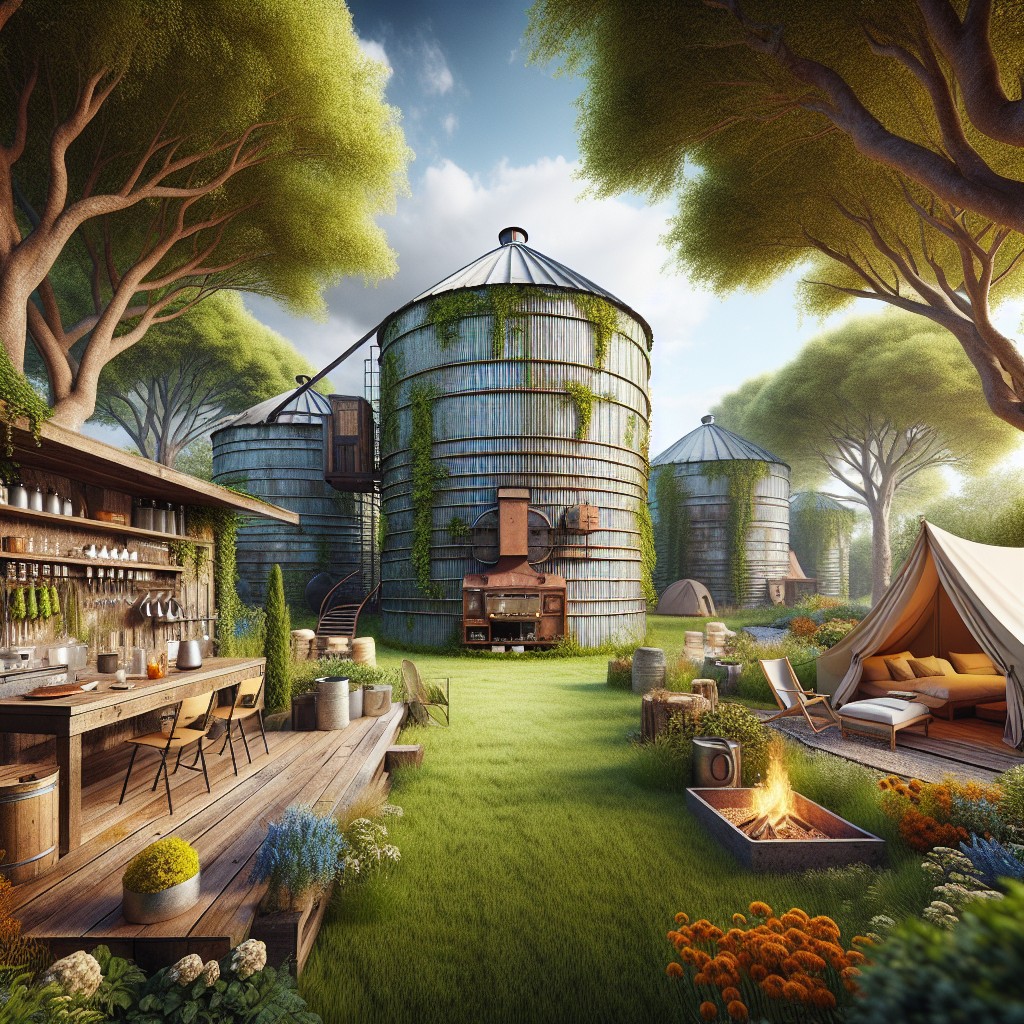
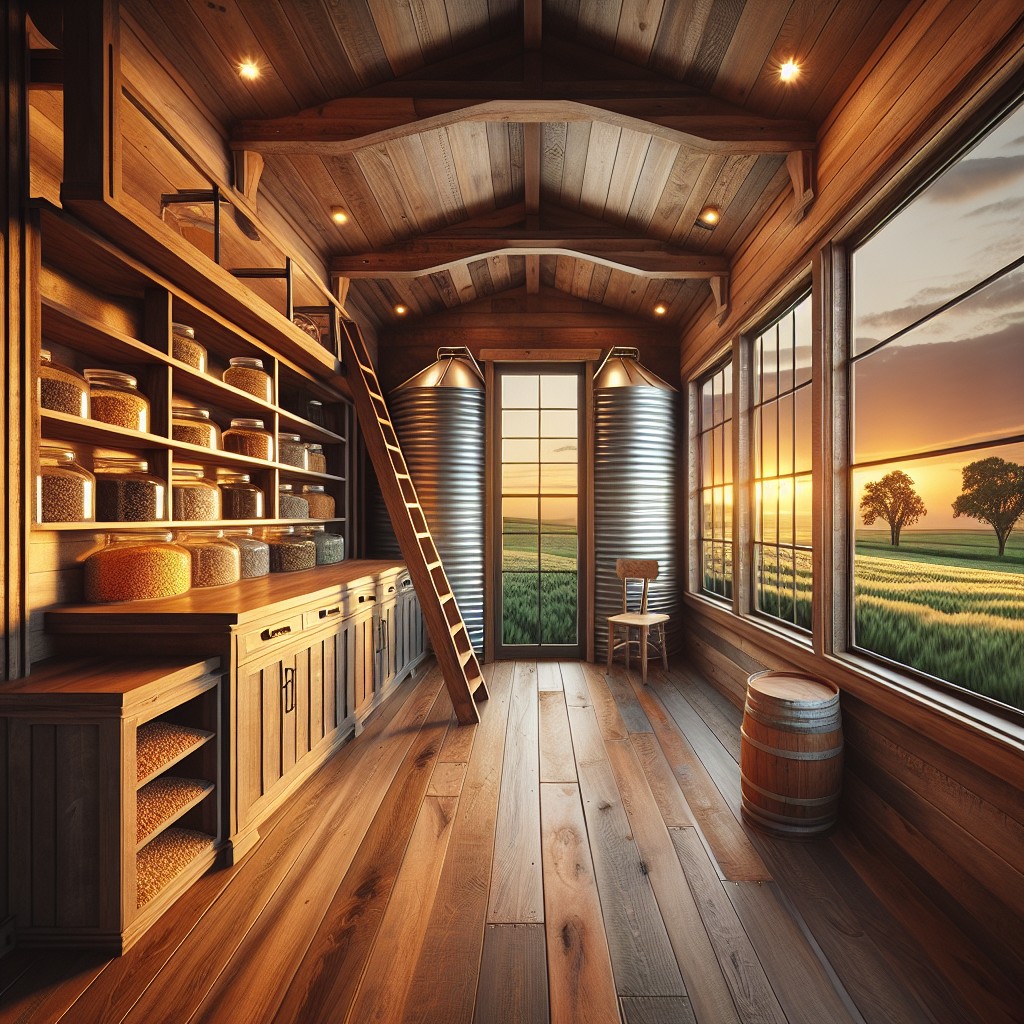
![How to Sell Leftover Building Materials? [Solved]](https://buildgreennh.com/wp-content/uploads/2022/07/sell-leftover-building-materials.jpg)
